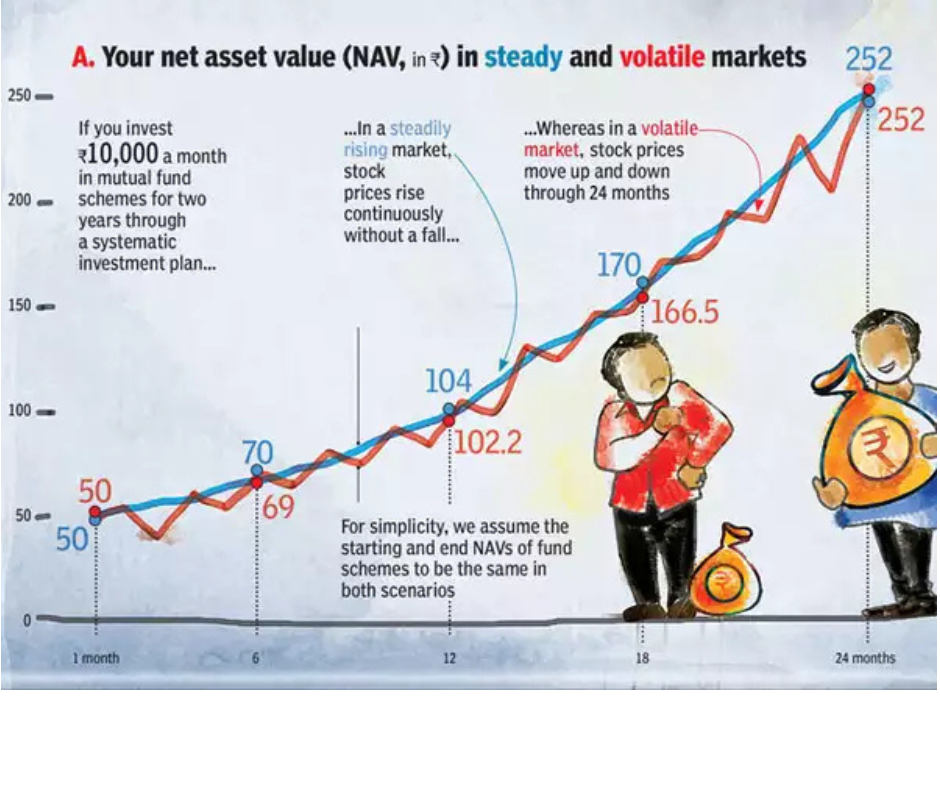How Market Fall is an Opportunity for SIP Investors?
By Akhil Chugh
Date February 16, 2025
Investing in the stock market can be an emotional rollercoaster, especially during volatile phases when indices like the Sensex and Nifty see sharp corrections. However, for systematic investment plan (SIP) investors, market downturns present a golden opportunity rather than a setback. SIP investors leverage the power of rupee cost averaging and long-term compounding, ultimately reaping benefits when the market recovers.
Understanding Rupee Cost Averaging:
SIP investments are structured to allocate a fixed sum periodically—monthly or quarterly towards mutual funds. When markets decline, the same investment amount buys more units, reducing the average cost per unit. Conversely, when markets rise, fewer units are purchased, preventing excessive overvaluation. Over time, this averaging effect lowers the overall investment cost, maximizing potential returns.
Example: How Rupee Cost Averaging Works
Let’s consider an investor who invests ₹10,000 every month in an equity mutual fund tracking the Nifty 50 index:

By Month 5, the investor has accumulated 270.69 units at an average cost of ₹184.69 per unit instead of ₹200. This illustrates how market downturns enable investors to accumulate more units at a lower cost, amplifying long-term gains when markets recover.
Lets compare two scenarios to understand rupee cost averaging better:


Choppier the market, greater the benefit to SIP investor as long as markets continue to rise, which has always been the case as explained below based on historical evidence.
The Power of Market Recovery:
Historically, the Indian stock market has always rebounded from downturns. For instance:
1. 2008 Financial Crisis
- The Sensex dropped by over 50% during the crisis.
- By the end of 2009, the index had rebounded by 75%, rewarding patient investors.
2. COVID-19 Pandemic (2020):
- In March 2020, markets nosedived due to global uncertainty.
- By December 2021, the Nifty 50 TRI had surged to record highs, delivering double-digit returns.
3. Mid and Small-Cap Recovery:
- Over the past 15 years, mid-cap and small-cap indices have delivered CAGRs of 16-18%, proving that patience pays off even in the most volatile segments of the market.
These instances underscore a critical lesson: while volatility is inevitable, recovery is often just around the corner.
Conclusion:
Market corrections, while seemingly alarming, serve as opportunities for SIP investors to accumulate more units at lower prices. The principle of rupee cost averaging ensures that over time, their cost of acquisition decreases, boosting returns when the market recovers. Given the historical resilience of Sensex and Nifty, disciplined SIP investors stand to gain significantly in the long run.
For those seeking long-term wealth creation, SIPs in equity funds remain one of the most effective strategies, turning market downturns into stepping stones for financial growth.
If you’re concerned about market volatility, and still confused about how to adjust your existing portfolio to optimize your investments, then don’t hesitate to talk to a financial professional at Net Brokers.
Connect with us today and take the next step toward a secure financial future.
Stay invested and committed!



